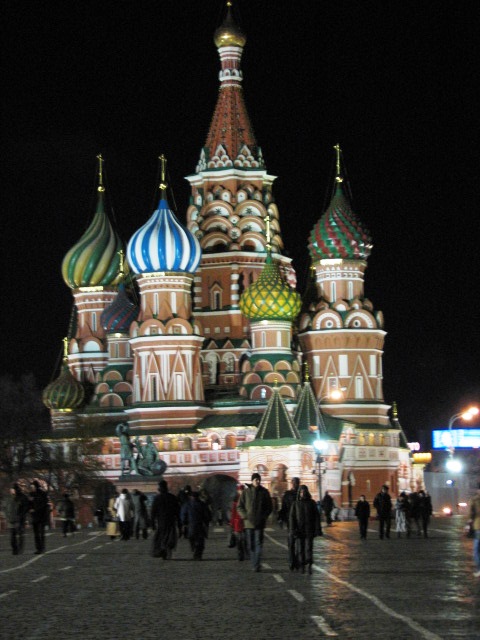|
Saint Nicholas Russian Orthodox Church
Saint Basil's Cathedral in Moscow, Russia
“The churches they allowed to remain they took them and turned them into garbage dumps and they would just fill them with garbage. After communism fell there must have been ten feet of garbage in these churches, layers of garbage. Well within two weeks some of those churches people had cleaned all that out, painted everything, and brought the icons and everything back into the church. The Church had survived. It’s quite a story.” -Father Onoufry interview, 2008
|
|
20th Century History of the Russian Orthodox Church |
|
1917 marked the restoration of the Patriarchate of Moscow and St. Tikhon was elected Patriarch. The Bolshevik Revolution also began its persecution of the Church in Russia. The revolution of 1917 cut off many dioceses from the Russian church including America, Japan and Manchuria. There was a flood of emigrants into these areas and Europe because of the persecution by the state of Russia. In 1920 at the height of the Russian Civil War, St. Tikhon issued a ukase directing Russian Orthodox dioceses outside Russia to govern themselves. In 1922 the Russian Orthodox Church Outside of Russia (ROCOR) was organized under the terms of St. Tikhon's ukase. In 1921 and 1922 the Soviet government commanded the church to donate its valuables to help alleviate the stress from a crop failure the year before. Some government officials used this situation to try to break the power of the church. This pattern continued and by the beginning of WWII the church hierarchy in Russia was almost completely defunct. Most of the clergy had been killed, forced to leave or imprisoned in concentration camps. Only a few hundred churches were still open for service by World War II. During World War II and the beginning of the cold war Stalin loosened state relations with the Russian Orthodox Church. He wanted to strengthen the war effort and present a better face to his western allies. So he allowed more churches to be opened and for some priests and bishops to be released from prison. Unfortunately many of these people had already been executed in past persecutions. Though relations had improved between the church and state in Russia, the state was still actively involved in church affairs. This led to many criticisms, especially from ROCOR that the church was being used as a tool of Stalin and was unduly influenced by the communist government. This tension between the ROC and ROCOR continued until the fall of the Soviet Union. On May 27, 2007 the Act of Canonical Communion with the Moscow Patriarchate was signed. This act led to the resumption of full relations between ROCOR and the Moscow Patriarchate, and ROCOR was granted autonomous status in the church hierarchy. Saint Nicholas Church is a parish of the Russian Orthodox Church Outside of Russia serving the faithful in and around Asheville, North Carolina. They are in the Deanery of the South within the Diocese of Eastern America and New York. Their Bishop is His Grace Gabriel, Vicar Bishop of Eastern America and New York.
|
